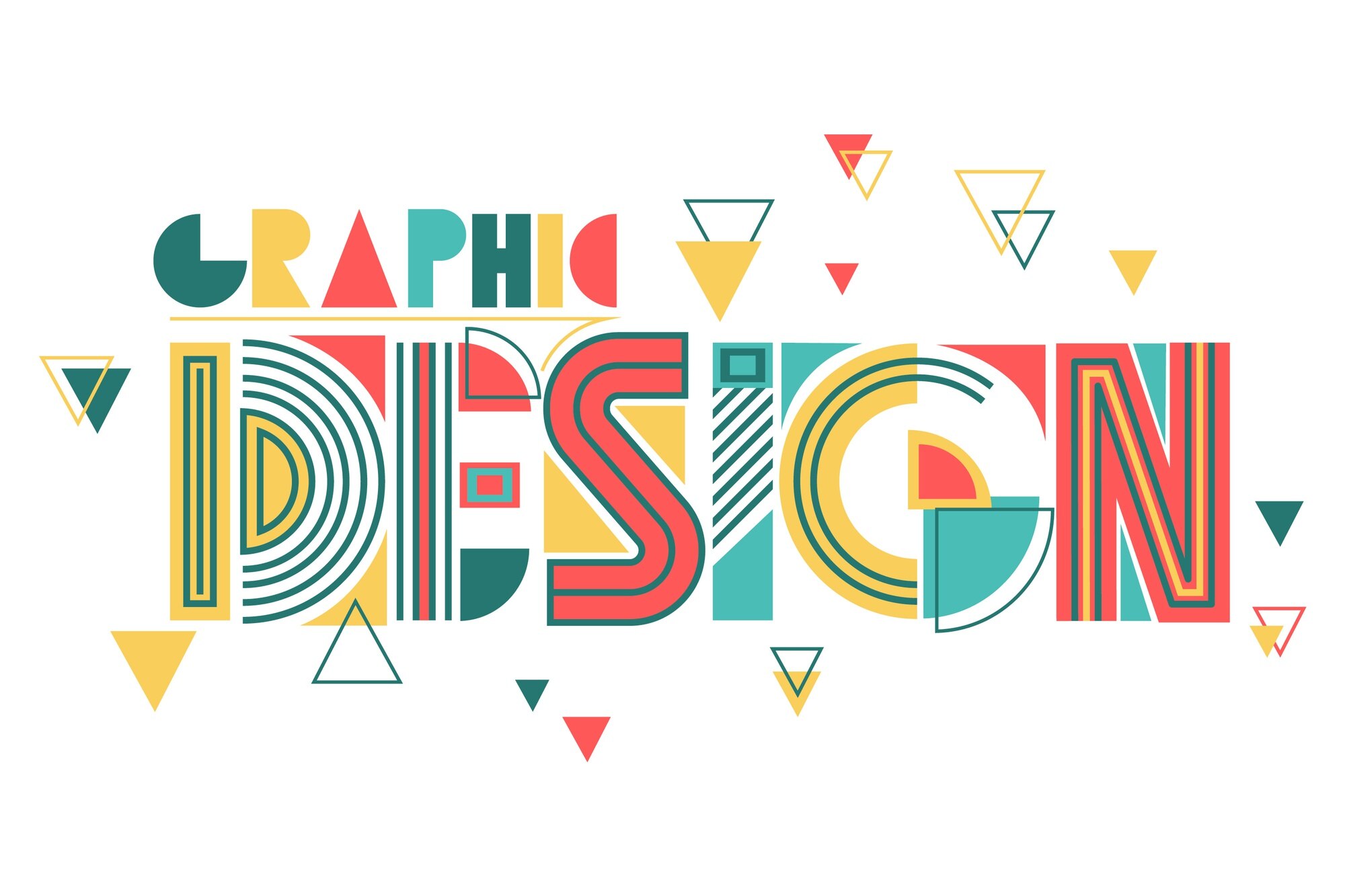Graphic design has a story to tell, one that goes beyond fonts and layouts. It's a narrative that spans centuries, reflecting societal changes, technological advancement, and artistic revolutions throughout history.
Believe it or not, the term "graphic design" wasn't even a thing until 1922! According to Adobe, William Dwiggins coined the phrase to describe the art of using visuals for communication. However, the practice itself has been around for much, much longer.
This deep connection between graphic design and the world makes it so fascinating. As technology evolves, society transforms, and artistic revolution inspires, graphic design continuously evolves, connecting the past, present, and future.
This journey through time reveals how graphic design has become more than just a profession. It's a powerful tool for storytelling, shaping our experiences, and leaving a lasting mark on history.
Earliest Graphic Design
Some of the earliest designs involved typography for books and newspapers, even though the term had not yet been coined. One may argue that drawings on cave walls could be seen as ancient graphics.
Fast forward to the 1900s when posters became an art form, the era saw graphic design in propaganda posters that appeared in the 1940s, like the “We Can Do It” poster which featured Rosie the Riveter. Slogans were crisp and added a graphic element that set the tone.
When technology started changing, it created new possibilities for many people, which gave rise to an industry known as graphic design.
Rosie the Riveter, J. Howard Miller in 1942
Source: Wikipedia
The First Signs Of Visual Communication
Historians trace the roots of graphic design back to the early cave paintings, around 38,000 BC. These paintings served as a way for early humans to communicate across generations.
Animals, handprints, and weapons were the principal subjects in these cave paintings with a view to hunting. Although the exact meaning behind these paintings can be debated, there's no doubt they served as a way to communicate knowledge, information, and stories.
Depiction of aurochs, horses, and deer
Source: Wikipedia
Fast forward to ancient Egypt, we find another fascinating example of visual communication: hieroglyphics. These intricate symbols were used around 3200 BC to adorn tombs and temples.
Hieroglyphs combined art and language to document history, religion, and culture. The meticulous carving and painting of these symbols showed an early understanding of design principles like composition, colour, and form.
The Invention Of Printing
You can’t think of graphic design without thinking of printing. The invention of printing in China around 200 AD was a turning point in the history of graphics design.
Woodblock printing was initially used to print patterns on silk clothes, it was later adapted for paper, which allowed the creation of multiple copies of text and images.
In 1040, Bi Sheng invented the world's first movable type printing press using porcelain. It made printing faster and more efficient compared to the woodblock methods.
Source: Wikimedia Commons
However, it was Johannes Gutenberg’s introduction of the movable type printing press in Europe in 1439 that truly revolutionized mass communication and book production, making it widely accessible.
The Gutenberg Press made literature and literacy affordable and available to the masses, eliminating the need to transcribe long books from scholars. This innovation significantly impacted graphic design, paving the way for its commercial applications, which we now recognize as graphic design itself.
Printing press, engraving by W Lowry after John Farey Jr., 1819
Source: Wikipedia
The first printed books, incunabula, were adorned with woodcut illustrations and decorative initials. Designers like Albrecht Dürer and Aldus Manutius pushed the boundaries of printed design, experimenting with typefaces, page layouts, and illustrations.
Page from Valerius Maximus, Facta et dicta memorabilia, printed in red and black by Peter Schoffer( Mainz, 1471).
Source: Wikipedia
How The Industrial Revolution Evolved Graphic Design
The Industrial Revolution, which lasted from about 1760 to 1840, introduced new technologies to increase the efficiency and production of manufacturing processes such as lithography.
Lithography is a method of printing that involves inking your design into a stone or metal surface and transferring it to a sheet of paper. Eventually, this led to chromolithography which is simply lithography but with color.
With advancements in printing technology and mass production, graphic design became an essential tool for advertising and communication.
This 1835 colour lithograph uses bold orange and cyan washes with black ink for detailing.
Source: Wikipedia
Posters, handbills, and packaging spread widely as businesses used attractive designs to attract consumer’s attention. Alois Senefelder's invention of lithography in 1796 allowed for more detailed and colourful prints. Artists like Henri de Toulouse-Lautrec and Jules Chéret changed poster design, blending art and business in ways never seen before.
We've explored the roots of graphic design in early visual communication. Now, let's see some major art movements that shaped graphic design into what it is today.
You'll likely see how these movements influence current trends, with some styles even experiencing resurgences. Understanding design history is crucial. It equips you to trace the origins of trends and leverage them effectively in your work.
The First Graphic Design Agency
The Wiener Werkstätte (which translates to Vienna Workshop) was established in 1903 by the painter Koloman Moser, the architect Josef Hoffmann, and the patron Fritz Waerndorfer.
The Werkstätte brought together architects, artists, and designers who specialized in ceramics, fashion, silver, furniture, and graphic arts. They’re regarded as a pioneer of modern design and early influence in styles such as Bauhaus and Art Deco. As one of the first groups of professional artists working together, they influenced design standards for the coming generations.
Art Nouveau
Art Nouveau (“New Art”) flourished in Western Europe and the United States from the 1880s until the First World War. It was a deliberate attempt to abandon the historical styles of the 19th century.
The creators of Art Nouveau sought to revive good workmanship, raise the status of craft, and produce a genuinely modern design that reflected the utility of the items they were creating. One distinctive characteristic of the style is the use of organic, asymmetrical linework instead of solid, uniform shapes — applied across architecture, interiors, jewelry, as well as posters and illustrations.
Paris Metro Station Abbwsses by Hector Guimard (1900)
Source: Wikipedia
Bauhaus
Bauhaus was an influential art and design movement that began in 1919 in Weimar, Germany. The Bauhaus school, founded by Walter Gropius, launched a new way of thinking.
Six months after the end of World War I, the school encouraged artists and designers to use their talents to help rebuild the broken society. The Bauhaus grammar — a triangle, a square, and a circle — evoked this back-to-the-basics mentality. They challenged everything, including the usual method of schooling.
They combined arts and crafts, classical and avant-garde styles, form and function. Bauhaus's design incorporated minimalism, geometric shapes, and simple typography. While the Bauhaus bubble lasted only 14 years, its influence remains in every aspect of modern life today.
Poster for the Bauhausaustellung (1923)
Source: Wikipedia
Swiss Design (The International Typography Style)
Building on the rational approach of the Bauhaus, this movement is all about functionality and universality. The style emerged in Russia, the Netherlands, and Germany in the 1920s and was further developed in Switzerland during the 1950s. Designers made a cohesive, unified Modernist movement that became the Swiss Design or the International Typographic Style.
Logical, modular grid systems provided a structured framework to align different elements, something now considered essential for most forms of graphic design. Realistic photography was preferred over more expressive illustration, alongside neutral sans-serif typefaces such as Helvetica.
Swiss design is minimal. Minimalism has experienced a comeback in branding, UI design, and packaging. This trend is driven by influential companies such as Apple and Google. They prioritize a clean, pared-back aesthetic above ornament and decoration. A vital contribution of the Swiss Design movement is their use of grids.
Now, can you imagine what it’d look like creating web designs without one?
Armin Hofmann, Poster for Kunsthalle Basel, 1959
Source: Wikipedia
The Mid-20th Century: The Rise of Corporate Identity
The mid-20th century saw the rise of corporate identity and branding. Companies saw the importance of a consistent visual identity in establishing their brand. Graphic designers like Paul Rand, Saul Bass, and Massimo Vignelli became pioneers in this field, creating iconic logos and corporate identities.
Rand's design for IBM, Bass's logos for AT&T and Warner Bros., and Vignelli's work for American Airlines are timeless examples of effective branding. These designers understood that a strong visual identity could communicate a company's values and beliefs, earning trust and recognition among consumers.
The Digital Age
The introduction of digital tools provided a new, revolutionary way of creating graphic design. In 1984, Apple introduced the Macintosh computer. It used a simple, user-friendly interface that said “Hello”, inviting consumers to be creators themselves.
Photoshop was launched in 1990 as a graphics editing software anyone could use to manipulate images and make professional designs. Basic programs like Microsoft Paint made graphic art accessible to the masses.
Source: Computer History
The internet brought about a new realm of possibilities for graphic design. Web design, user interface (UI) design, and user experience (UX) design emerged as crucial disciplines in the digital age. Designers had to adapt to new mediums, creating visually appealing and functional websites and apps.
The Present and Future: Design in a Globalized World
Today, graphic design is a global phenomenon, influenced by diverse cultures, technologies, and trends. The rise of social media, augmented reality (AR), and virtual reality (VR) presents new challenges and opportunities for designers. The principles of graphic design remain rooted in the past, but the tools and mediums continue to evolve.
Designers are now more connected than ever, collaborating across continents and drawing inspiration from a vast pool of sources. Sustainability and inclusivity have become essential considerations, as designers strive to create work that is not only visually appealing but also socially and environmentally responsible.
Conclusion: A Continuum of Creativity
The evolution of graphic design is a testament to human creativity and ingenuity. However, the story of graphic design is far from over. As technology continues to move forward and the world becomes increasingly interconnected, graphic design will undoubtedly evolve in ways we can only begin to imagine.
But one thing will remain constant: the core purpose of graphic design – to communicate ideas, shape experiences, and leave a lasting mark.
So, are you ready to be a part of this ongoing creative narrative?
Subscribe to The DSGN Room to stay up-to-date with the latest trends, tips, and insights in the world of branding and design.
Let's keep the conversation going! Share your thoughts on the evolution of graphic design and what your predictions for the future are.



